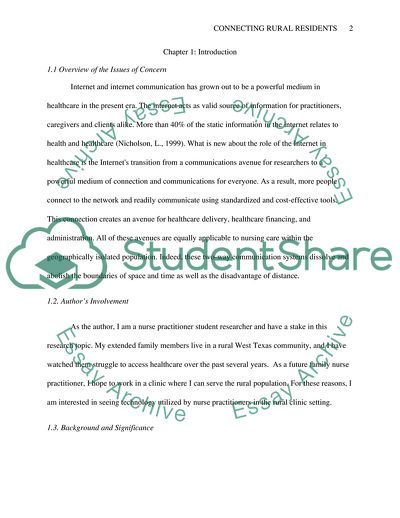Cite this document
(Connecting Rural Residents to the Nurse Practitioner via Two-Way Techn Research Paper, n.d.)
Connecting Rural Residents to the Nurse Practitioner via Two-Way Techn Research Paper. https://studentshare.org/health-sciences-medicine/1716933-two-way-technology-available-for-the-clinic-nurse-practitioner-to-connect-with-her-rural-west-texas-patients-with-an-emphasis-on-current-reimbursement-sources
Connecting Rural Residents to the Nurse Practitioner via Two-Way Techn Research Paper. https://studentshare.org/health-sciences-medicine/1716933-two-way-technology-available-for-the-clinic-nurse-practitioner-to-connect-with-her-rural-west-texas-patients-with-an-emphasis-on-current-reimbursement-sources
(Connecting Rural Residents to the Nurse Practitioner via Two-Way Techn Research Paper)
Connecting Rural Residents to the Nurse Practitioner via Two-Way Techn Research Paper. https://studentshare.org/health-sciences-medicine/1716933-two-way-technology-available-for-the-clinic-nurse-practitioner-to-connect-with-her-rural-west-texas-patients-with-an-emphasis-on-current-reimbursement-sources.
Connecting Rural Residents to the Nurse Practitioner via Two-Way Techn Research Paper. https://studentshare.org/health-sciences-medicine/1716933-two-way-technology-available-for-the-clinic-nurse-practitioner-to-connect-with-her-rural-west-texas-patients-with-an-emphasis-on-current-reimbursement-sources.
“Connecting Rural Residents to the Nurse Practitioner via Two-Way Techn Research Paper”. https://studentshare.org/health-sciences-medicine/1716933-two-way-technology-available-for-the-clinic-nurse-practitioner-to-connect-with-her-rural-west-texas-patients-with-an-emphasis-on-current-reimbursement-sources.


